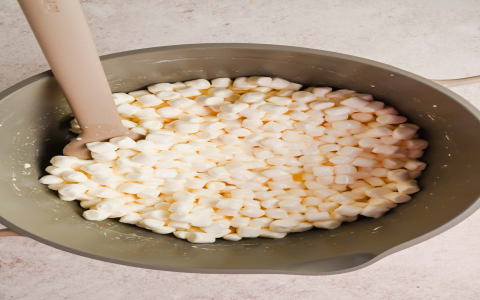Exploring the differences and potential substitutions in recipes can open up a whole new world of culinary creativity. One such curiosity among baking enthusiasts and dessert lovers is whether you can substitute marshmallows for marshmallow fluff in your favorite recipes. Understanding the differences between these two ingredients and how they behave in various dishes is key to making informed, seamless swaps in the kitchen.
Marshmallows and marshmallow fluff might seem interchangeable at first glance, as they share that delightful sweet, airy quality. However, they differ considerably, both in texture and composition. Marshmallows are solid, spongy confections primarily made from sugar, water, and gelatin. They maintain their shape even when heated, making them perfect for treats like s’mores or toasting over a campfire. On the other hand, marshmallow fluff is a creamy, spreadable mixture made without gelatin, relying instead on ingredients like egg whites for its structure. This gives fluff its unique texture and makes it a popular choice for recipes requiring a smooth, melt-in-your-mouth quality.
Now, can you substitute marshmallows for marshmallow fluff? The answer depends largely on the recipe and the role marshmallow fluff plays in it. For recipes where fluff is used primarily for its texture, such as in frosting or as a filling, substituting regular marshmallows can be challenging. Melting marshmallows to achieve a similar consistency can result in a stickier, denser mixture due to the gelatin content. This may not spread as smoothly or have the same lightness that fluff brings to desserts.

However, certain adaptations can make this substitution more feasible. When melting marshmallows to create a fluff-like texture, adding a bit of corn syrup and beating the mixture while it’s warm can help achieve a closer approximation to the creaminess of marshmallow fluff. It’s essential to be mindful of proportions and consistency, experimenting until you find what works best for your specific application.
Recipes based on heat stability, such as Rice Krispie treats or certain types of cookies, might fare better with marshmallow substitutions. Here, the structural differences do not pose as much of an issue since the end product’s consistency relies less on the spreadable quality of the fluff. The chewiness of melted marshmallows could even add a delightful twist to these baked goods, offering a slightly different texture that some might find preferable.
When using marshmallows in place of marshmallow fluff, it’s also important to note the sugar content. Marshmallows tend to be sweeter, so adjusting the amount of other sugars in the recipe might be necessary to avoid overly sweet outcomes. Additionally, the gelatin in marshmallows can add a degree of firmness that might not be desirable in all recipes, so modifications may be needed depending on the finished product you’re aiming for.
An aspect to keep in mind is the ease of use. Marshmallow fluff is ready straight from the jar, requiring no preparation. In contrast, using marshmallows involves additional steps of melting and possibly adjusting the consistency, which could be a deciding factor in your choice, depending on convenience and time constraints for your baking project.
In essence, while substituting marshmallows for marshmallow fluff can be done in certain circumstances, it’s not always a straightforward swap. The nature of your recipe and desired texture are crucial considerations, and a bit of experimentation might be necessary to perfect your creation. Understanding how each of these ingredients behaves can make all the difference, ensuring your sweet treats turn out just as delicious as you envision. Mix creativity with a touch of flexibility, and you might uncover delightful new flavors and textures in your culinary journey.













